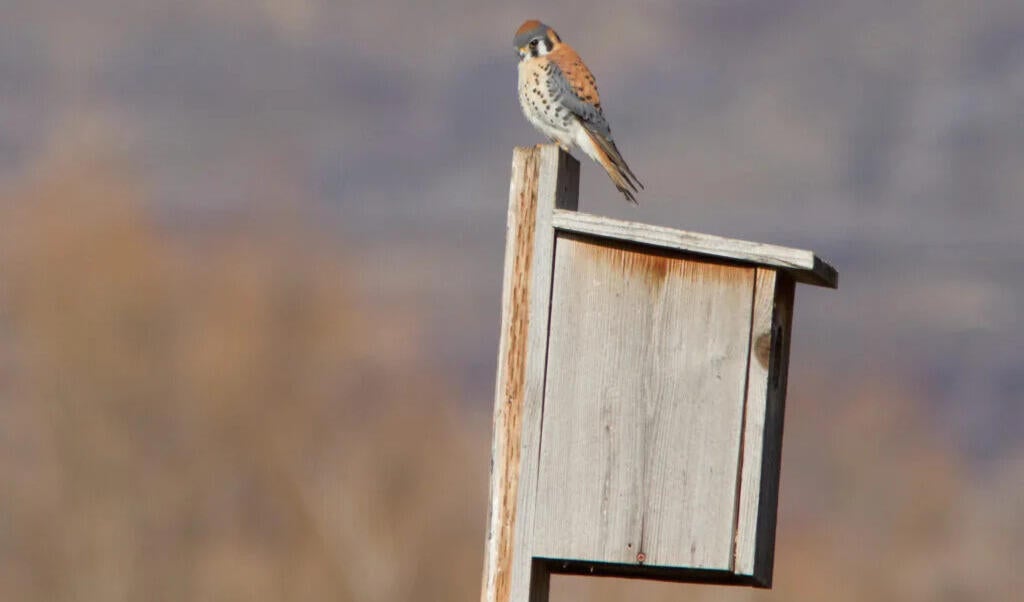American Kestrels, North Americas smallest falcon, are colorful and charismatic birds that hunt in open fields and meadows. Unfortunately, American Kestrel populations are declining in North America and the cause of the decline is unknown.
Our Treasure Valley American kestrel nest box project is the 3rd largest project in North America and has been running for more than 30 years. Each year, students from Boise State University monitor more than 150 American Kestrel nest boxes in Idaho’s Treasure Valley (Boise and Kuna) and Camas Prairie (near Fairfield). We check nest boxes for kestrel occupancy, monitor the timing and outcome of breeding, and mark and recapture birds to study movement and survival. The information collected from these nest boxes gives us insight into the ecology of kestrels and will ultimately help us discover the cause of population declines.
By adopting an American Kestrel nest box, you can play a vital role in finding the cause of American Kestrel declines. Your support helps to provide safe sites for Kestrel nesting, training opportunities for the next generation of biologists, and contributes to ongoing research about kestrel populations. Together, we can ensure a brighter future for Kestrels!

Please consider a yearly adoption of one of our nest boxes.
Nest box adoptions are symbolic (we do all of the work!) and nest boxes adoptions make a great gift! Adopting a kestrel box helps Boise State sustain this long-term study as we work to understand the threats that impact our smallest falcon. Funds will go towards replacing boxes, purchasing supplies, providing student internships, or paying for fuel to maintain the trail. Your adoption will be tax deductible. Please consider becoming a part of our team by adopting a box!
For each $100 adoption, you will receive:
-
- An official adoption certificate
- Two reports on the the birds nesting in your box
- Updates on the nest box program
- Satisfaction of supporting kestrels!
Adopt Now
When you click this button you will be taken to Boise State’s “Pony Up” page for adopting a box. Click “Make a Gift” and start your adoption!
Any questions? Please email fcphenology@boisestate.edu or call 208-426-3208. Thank you for the help!
Page updated November 2024